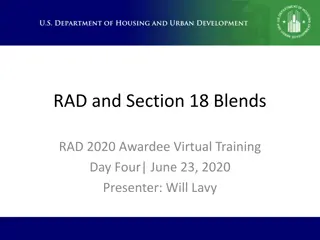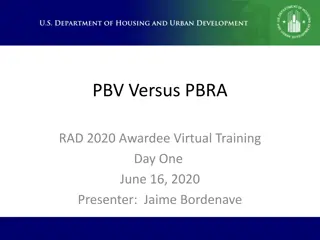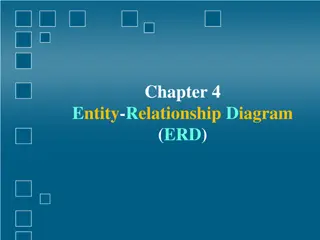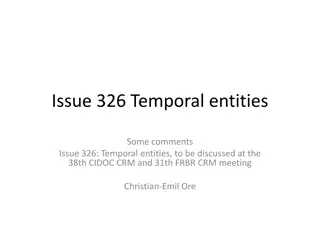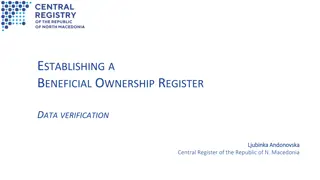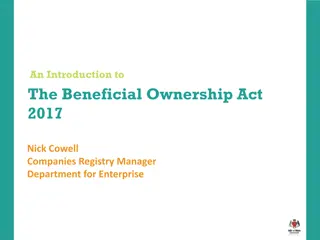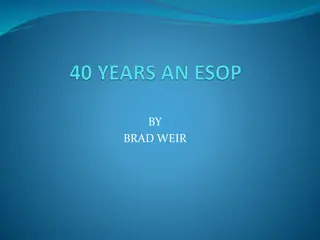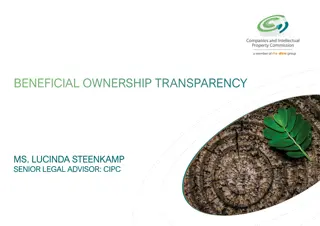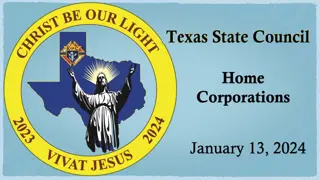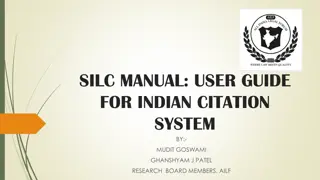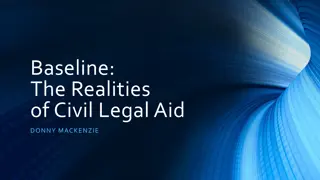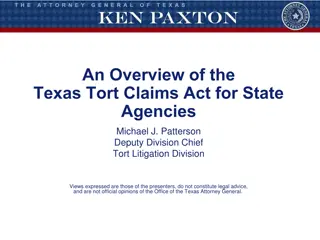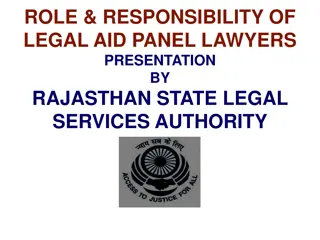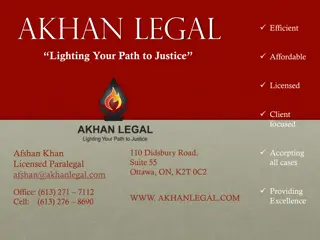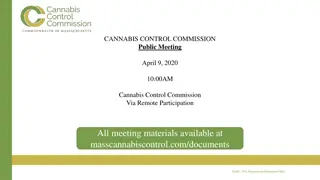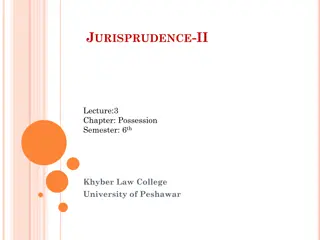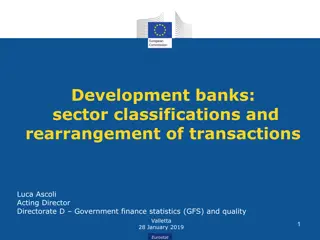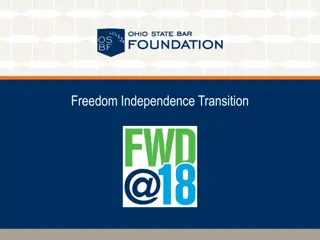Legal Entities and Ownership Control in RAD Awardee Training
Explore the nuances of ownership, control, and legal structures in the context of RAD 2020 Awardee training, covering topics such as governing corporations laws, unique ownership requirements, RAD statutes, and implications of ownership changes. Learn about the RAD Ownership/Control Matrix and third-party imposed financing requirements for a comprehensive understanding of managing legal entities effectively.
Download Presentation

Please find below an Image/Link to download the presentation.
The content on the website is provided AS IS for your information and personal use only. It may not be sold, licensed, or shared on other websites without obtaining consent from the author. Download presentation by click this link. If you encounter any issues during the download, it is possible that the publisher has removed the file from their server.
E N D
Presentation Transcript
Ownership/Control and Setting up New Legal Entities RAD 2020 Awardee Virtual Training Day Three | June 18, 2020 Presenter: Kathleen Foster
Governing Corporations Law State law: governs the creation of corporations both for profit and nonprofit. Rules vary state by state. Hire attorney qualified to practice in your state. Federal law: IRS laws and regulations: govern nonprofit federal tax exemption and ability to receive charitable contributions 1
Topics RAD s Unique Ownership and Control Requirements When a Change in Ownership May be Desired or Imposed by Third-Parties Different forms of PHA Non-Profits types, advantages/disadvantages, and creation Organizational Impacts (Panel topic) 2
Controlling Statutory Language the Secretary shall require ownership or control of assisted units by a public or nonprofit entity and may allow ownership to be transferred to a for-profit entity to facilitate the use of tax credits only if the public housing agency preserves its interest or a nonprofit entity preserves an interest in the property in a manner approved by the Secretary 4
Implications No change in ownership required by RAD A change in ownership might be dictated by: Lender (single-asset entity) Tax credits (for profit LLC required for tax benefits to flow to investor) PHA preference/desire There is no requirement for change in ownership purely as a result of PBV or PBRA However, under PBV HAP rules, PHA can t be on both sides of a HAP contract, i.e., both property owner and PBV administrator 5
RAD Ownership/Control Matrix PHA Owned Allowable under RAD PHA Nonprofit Other Public or other Nonprofit Entity Tax Credit (LLCs or Single Asset Entities) It depends Private Non Tax Credit 6
Third-Party Imposed Financing Requirements 7
Third Party Financing Requirements Lenders Single-asset entities required by most mortgage lenders (including FHA). Provides the lender protection against other properties owned by the PHA having a negative impact on the Bank s collateral. FHA lenders require a single asset entity which can be a for-profit, non-profit, LLC or LP Tax Credits Property must be held in a for profit Limited Liability Corporation (LLC) or Limited Partnership (LP) for tax benefits to flow to investor(s) 8
The Tax Credit Process Residential Rental Development (for qualified residents with incomes 50- 60% of AMI Federal Government allocates credits to states Tax credit Tax credit State finance agencies allocate credits to housing development Tax credit Tax credit Corporate investors Limited Partnership 9
Characteristics of an LLC/LP An LIHTC property must be held in an LLC or LP. Investor owns 99.99% of the LLC or LP interest Managing Member owns .01% and is in charge of day to day operations. If qualified, the PHA or a subsidiary can be the Managing Member, or can have an ownership interest in the Managing Member. PHA subsidiary can be a nonprofit or an LLC. LLC or LP has no Board but requires the naming of officers (typically PHA senior staff) LLC or LP are for profit entities, PHAs may need to renegotiate PILOT Agreements with localities. Because LLCs/LPs typically have different investors, there will likely be as many LLCs/LPs as there are LIHTC deals and phases of deals. 10
How to Comply with RAD Ownership/Control in an LIHTC transaction PHA (or non-profit) is controlling member of the ownership entity Long-term ground lease (often 60+ years) Control Agreement : LLC Agreement specifies key LLC activities that PHA (or its entity) has control, i.e., change of property management, sale of property, re-financing, etc. Right of First Refusal when combined with other indicators of control (insufficient alone) 11
PHA Owned: No nonprofit needed No debt transactions Non-FHA debt transactions where property being financed is the only asset 13
Why Create a Nonprofit? Need/want a separate entity for other administrative purposes such as: Administration of RAD PBV, Facilitate Section 18 disposition to PHA-controlled entity, Qualification as CHDO (to access additional HOME funding) Qualification to receive contributions to Resident Services, Scholarship Funds, etc. Prefer a Board structure for community involvement Tax-exempt income May qualify for RE tax exemption (varies by state) 14
Steps to Establish a Nonprofit Hire legal counsel Identify a qualified Board Draft by-laws Set aside start-up funds Determine reporting requirements Make application to state for registration Determine whether to seek IRS status 15
Why Seek IRS Nonprofit Status? 30 different types of nonprofit are recognized by the IRS 501c3: Most common federal nonprofit form Income is tax-exempt Eligible to receive tax-exempt charitable contributions Typically qualify for RE tax exemptions May qualify for donation of construction materials Often set up to administer resident services and/or scholarship funds Separate accounting and annual reporting Restrictions on lobbying Care must be taken to preserve tax-exempt status 501c4: Social Welfare Organization No charitable deduction eligibility Looser restrictions on lobbying 16
PBV Administration In a PBV conversion, the PHA cannot both own the property and administer the PBV per PBV regulation (Not RAD). Not an issue in a LIHTC deal because LLC owns property In a non-financial or debt-only conversion Set up a separate entity to administer the PBV Can have same Board as PHA Determine method for allocating staff time/costs 18
Section 18 Disposition Section 18 requires that property be disposed of to a separate entity from the PHA This requirement can be met by disposing to a new entity created by the PHA. The PHA Board can wholly control the new entity and still meet the requirement. 19
Qualification as CHDO A Community Housing Development Organizations (CHDO) is a nonprofit, community-based, service organization that has staff with the capacity to develop affordable housing for the community it serves. Can be used for acquisition, rehabilitation, new construction of rental housing as well as homebuyer properties and homebuyer assistance. Participating Jurisdiction (PJ) must set aside 15% of annual allocation for CHDOs. Special Board composition requirements (community members with at least 1/3 low-income members). Note that PHA Board members may not be qualified to be CHDO Board members. May create resistance to release control. 20
PHA Board Control If the Board of the PHA and the new entity are the same (Subsidiary/Instrumentality), they have an Identity of Interest (IOI) that must be disclosed in various transactions. If the Boards are not identical, but are overlapping, (Affiliate) state law determines when there is an identity of interest. If the Boards are totally separate, the PHA Board can transfer assets to the new entity but will then not have control over the new entity. (Other) Note that the entity rules applying in mixed finance transactions ( 24 CFR 905.604) do not apply in RAD conversions to Section 8. 22
Staffing Impacts PHA personnel can serve as staff for the new entities, provided there is a written agreement approved by the Board. Time can be accounted for as a % OR Staff can be required to use a timesheet system that clearly differentiates between tasks for each entity This system may preserve the employees ability to qualify for state pension plans, etc. Staff can be separately hired for new entities 23
PHA Accounting Impacts Moving from public accounting to real estate accounting Entities typically must be accounted for separately LIHTC assets will move from general balance sheet to LLCs: Importance of Board education 24
Panel James Cox: COO, Greensboro Housing Authority Separate entity used for RE development, Greensboro Housing Management Company Entity for RAD PBV administration Will Beatty: Consultant to Cairo PHA Set up 2 new nonprofits that will own entire inventory; FHA financing 25
Panel Topics How many separate LLC s and other entities do you have? Why did you choose to set them up? Any particular challenges with the Board? Challenges for the CFO in moving from public accounting to real estate accounting? Tips on managing time-keeping for shared staff? Any advice for someone deciding whether or not to set up a new entity? Challenges Lessons learned 26
Next Session Transfer of Assistance Presentation addresses the option PHAs may consider transferring assistance to existing housing or to new construction as part of the conversion. Will Lavy, HUD Office of Recapitalization 27



